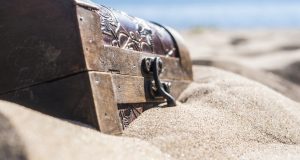
When it comes to attitudes to Aboriginal people non-indigenous Australians seem to have a massive blind-spot.
Despite legitimate debate in the History Wars precipitated by Keith Windschuttle’s controversial writings one wonders whether the real reason in his denying the validity of Aboriginal oral history and missionary advocates on their behalf is so we can avoid seeing or hearing the evils of racism in our history.
In reacting against so-called “black armband” history we have lurched to “white blindfold” history.
While we individually may not have been there and been individually guilty, we share a sense of social and historical shame. We are part of a corporate entity and history. If we identify with the heroic feats or defeats of the Anzacs, or even of our sporting heroes present and past, we should also share in the more ambiguous parts of our history.
Our unwillingness to name this shame renders Aboriginal people invisible and inaudible, private, not public. For the first time since PM William McMahon we do not have a full-time minister for Aboriginal Affairs. Meanwhile Labor has sought to keep Aboriginal issues as a small target and … has had six shadow ministers in the portfolio in the past two years.
Both parties have abandoned the principal of self-determination and representation. We now have a government selected group of relatively voiceless Aboriginals on the new National Indigenous Council and the restoration of the previously discredited notion of mainstreaming of Aboriginal services.
Larissa Behrendt said: “As a result, the majority of Aboriginal people, while critical of ATSIC, have been left voiceless, despite the fact that they are the ones who will have to live with the experiments of shared responsibility agreements and mutual obligation.”
This is all part of a broader de-voicing of society and the Church on biblical social morality. Bedroom morality is OK but not boardroom or ballot-box morality.
Aboriginal people are only selectively visible and audible if they are sporting heroes like Evonne Goolagong-Cawley, Cathy Freeman or Michael Long. Or if they engage in protest, like Michael’s Long Walk to Canberra to talk to the PM or the Redfern and Palm Island riots after the tragic and brutal deaths of young Aboriginals in altercations with the police; in the Redfern case seemingly accidental, in the Palm Island case more doubtful. Or if they lay down on the road to be run over or suicide after petrol sniffing as several have recently in the Northern Territory and South Australia respectively.
The most moving funerals I took when at Malabar Anglican were those of young Aboriginals from the La Perouse Mission, opposite the white birth-place of Australia at Captain Cook’s landing in Kurnell. They often died of drug or alcohol related causes. Funeral directors, like many Australians, couldn’t handle the visibility and the voice of their grief.
As the grief counsellor Mal McKissock reminded us years ago, Australia will never be healed until we join together in mutual grieving, Aboriginals for the loss of their land, loved ones, livelihood, and lifestyle, white Australians for their continuing sense of exile from mother England’s (or Europe’s) ‘green and pleasant land’. Perhaps Aboriginals can teach us how to recapture a biblical sense of lament, so prominent in the psalms.
Without lamenting and coming to terms with our ambiguous racial history we will be unable to move forward and face contemporary issues concerning other races.
These issues include asylum seekers’ mandatory detention, anti-terrorism advocate’s racial profiling of those of ‘Middle Eastern appearance’, and the spurious racial stereotyping by Macquarie University law professor Andrew Fraser saying ‘an expanding black population [in Australia] is a sure-fire recipe for increases in crime, violence and a wide range of other social problems’.
We will only deal with the question of race with grace, and hospitality not hostility, if we allow ourselves to see the face and hear the voice of the Aboriginal and the other as our brother or sister (Matthew 25:31-46).
Photo : Rev Dr Gordon Preece
 JourneyOnline
JourneyOnline






